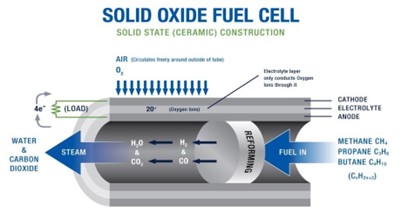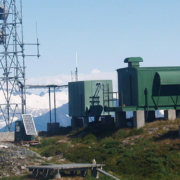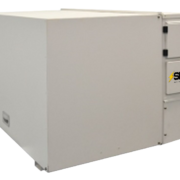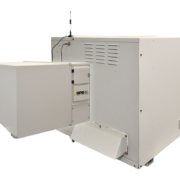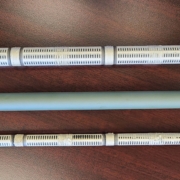A Comprehensive Comparison of Planar and Tubular Solid Oxide Fuel Cells
As the world continues to seek sustainable energy solutions, solid oxide fuel cells (SOFCs) have emerged as a promising technology for clean and efficient power generation. Among various SOFC designs, the planar and tubular architectures are the most prevalent.
Knowing the difference between the two is imperative for individuals, businesses and communities who are exploring new solutions to their energy needs.
In this blog post, we will conduct an in-depth comparison of planar and tubular SOFCs, exploring their respective advantages, disadvantages, and applications. Understanding the differences between these two designs is crucial for making informed decisions in the pursuit of sustainable energy solutions.
Planar SOFCs
Planar SOFCs, as the name suggests, have a flat, layered structure resembling a sandwich. This design typically consists of an electrolyte sandwiched between two electrodes, often referred to as the anode and cathode. The electrolyte material is usually a dense ceramic membrane, while the electrodes are porous ceramic or metallic materials with catalysts to facilitate electrochemical reactions.
Their simple design and ability to stack makes planar SOFCs ideal for situations that require portable designs or scalable solutions.
Let’s explore some of the advantages.
Advantages
a. High Power Density: Planar SOFCs can achieve higher power density due to their thin and compact design, making them suitable for applications requiring a high power output.
b. Easy Stack Assembly: The flat and simple design of planar SOFCs simplifies the stack assembly process, reducing manufacturing complexity.
c. Enhanced Heat Transfer: Planar SOFCs offer better heat transfer characteristics, leading to improved thermal management and overall system efficiency.
Disadvantages:
a. Thermal Stress: Planar SOFCs are more susceptible to thermal stresses due to their rigid structure, leading to potential mechanical failures during thermal cycling.
b. Manufacturing Complexity: While stack assembly is relatively straightforward, planar SOFCs’ intricate design may actually increase manufacturing complexities for certain projects.
c. Material Compatibility: The choice of materials becomes critical for planar SOFCs, as some materials may not withstand the temperature gradients and chemical environment.
Tubular SOFCs
Tubular SOFCs, as the name implies, feature a cylindrical geometry. The structure consists of a tubular electrolyte, anode, and cathode, forming a core-shell arrangement. The tubular design offers some unique characteristics that set it apart from its planar counterpart.
The tubular structure allows for better fuel utilization and thermal tolerance providing a longer lifespan than other fuel cells. These unique characteristics make it ideal for industrial applications and large-scale power generation.
Let’s explore the advantages and disadvantages is more detail.
Advantages:
a. Reduced Thermal Stress: Tubular SOFCs have better tolerance to thermal stresses due to their cylindrical geometry, reducing the risk of mechanical failures.
b. Superior Fuel Utilization: The tubular design allows for efficient utilization of the fuel, as it flows through the central tube, enabling better contact with the electrolyte.
c. Longer Lifespan: Tubular SOFCs tend to have a longer operational lifespan due to reduced thermal stress and improved fuel utilization, resulting in better durability.
d. Flexibility in Fuel Composition: The tubular architecture can accommodate a wider range of fuel compositions, making them suitable for various fuel types.
e. Faster Startup Times: The tubular configuration allows for faster startup and shutdown times, making them suitable for applications requiring rapid response.
Disadvantages:
a. Lower Power Density: Tubular SOFCs generally have lower power density compared to planar SOFCs due to their larger volume-to-surface area ratio.
b. Complex Stack Assembly: The cylindrical shape of tubular SOFCs makes stack assembly more intricate and time-consuming, potentially increasing manufacturing costs.
Exploring the Best Case Applications
For power generation solutions, the choice between planar and tubular SOFCs depends on the specific application and requirements. As we discussed above, each with its unique advantages and disadvantages makes them best suited for specific applications.
We will highlight a couple of applications that suit each design to provide insights into what scenarios work best for each SOFC type.
Planar SOFCs:
- Portable Power Generators
- Auxiliary Power Units (APUs) for Transportation:
- Residential and Small-scale Power Generation:
- Backup Power Systems:
- Hybrid Energy Systems:
- Micro Combined Heat and Power (CHP) Systems
Tubular SOFCs:
- High-temperature Industrial Processes
- High-efficiency combined heat and power (CHP) systems
- Large-scale Power Generation
- Flexibility in Fuel Composition
- Long-duration Operations
- Remote and Off-grid Locations
Keep in mind that as leading SOFC manufacturers continue to innovate, they will continue to find new applications for their fuel cells and improve upon their designs making them more suitable for various other applications.
If you are looking for a unique power solution, talk with a SOFC supplier in how their products might meet your power needs.
Which solution is best suited for your power generation needs?
Both planar and tubular SOFCs are creating opportunities for better energy solutions. Due to their unique designs, each has its own unique advantages and disadvantages that make them suitable for various applications.
Planar SOFCs offer higher power density and faster startup times, making them ideal for portable and smaller-scale power generation. On the other hand, tubular SOFCs excel in durability, longer lifespan, and flexibility in fuel composition, making them more suitable for large-scale power plants and industrial applications.
The continued research and development in both planar and tubular SOFC technologies will further enhance their efficiency and reduce manufacturing costs, ultimately contributing to a cleaner and more sustainable energy future. As the world moves towards decarbonization and energy independence, SOFCs, regardless of their design, will play a crucial role in the transition to a greener world.
Are you looking to solve a unique power issue? At Special Power Sources, we use SOFCs to solve our client’s energy needs. Contact our team to discuss if SOFC is the right solution for your needs.

